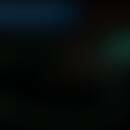Synonym(s)
DefinitionThis section has been translated automatically.
Subgroup of white blood cells (leukocytes). Lymphocytes are important for the defence against pathogens. Their share of the total leukocytes is 25 to 40%. A pathological increase in lymphocytes (>4000(ul) is called lymphocytosis, a pathological decrease in lymphocytes (<1500/ul) lymphopenia.
Basically there are 2 forms of lymphocytes:
- B lymphocytes and T lymphocytes.
- B-Lymphocytes (B-cells): mature in the lamina propria (MALT) and in the lymph nodes and produce specific antibodies against foreign antigens.
They can be further subdivided into naive, i.e. not antigen-contacted B cells, plasma debris, plasma cells and B memory cells.
T lymphocytes (T cells - surface antigen =CD3): mature in the thymus (thymocytes - surface antigen =CD1) and directly recognize foreign cells. Further subforms are among others naive T cells, T killer cells, T helper cells (surface antigen =CD4), T suppressor cells - surface antigen =CD8), regulatory T cells (Treg), T memory cells, Th-17 cells.
T helper cells are divided into Th1 cells and Th2 cells for functional reasons (see Th cell below).
The T effector cells form in their entirety the humoral immune system for the cellular immune system, B lymphocytes together with plasma cells. See also immunodeficiencies (D84.9)
ClassificationThis section has been translated automatically.
Basically and for functional reasons there are 2 forms of lymphocytes: B-lymphocytes and T-lymphocytes.
- B-lymphocytes (B-cell surface antigen = CD14,CD19+79+20, cell count 70-210 cells/ul): mature in the lamina propria of the intestinal epithelium (MALT) and in the lymph nodes and produce specific antibodies against foreign antigens. B lymphocytes can be further subdivided into naive, i.e. not contacted by antigens, B cells, plasma cells and B memory cells.
- T lymphocytes (T cells - surface antigen = CD3, cell count 750-130 cells/ul ): mature in the thymus (thymocytes - surface antigen = CD1) and directly recognize foreign cells. Subtypes of T-lymphocytes are: naive T-lymphocytes, cytotxic T-lymphocytes (Tc-cells), T-helper cells ( Th cells - surface antigen = CD4), T-suppressor lymphocytes (surface antigen = CD8), regulatory T-cells (Treg), T-memory cells, Th-17-lymphocytes.
- T helper cells are divided into Th1 cells and Th2 cells for functional reasons. Both cell systems are characterized by their own cytokine pattern. Their cell count is 500-900 cells/ul.
A pathological increase of lymphocytes (>4000(ul) is called lymphocytosis, a pathological decrease of lymphocytes (<1500/ul) is called lymphopenia.
The T-effector cells in their entirety form the cellular immune system, B-lymphocytes together with plasma cells form the humoral immune system. S.a. Immunodeficiencies (D84.9)
General informationThis section has been translated automatically.
Standard value (total lymphocytes): 1.500 - 4.000/µl (15 and 50 %)
B-Lymphocytes: B-Lymphocytes produce special antibodies directed against certain pathogens or harmful substances after appropriate stimulation. They thus belong to the specific defence. Antigen-specific B cells with specific monomeric receptor molecules of the IgM class are already available on first contact with an antigen. An antigenic stimulus leads to the expression of allergen-specific antibodies of certain immunoglobulin classes on the cell membrane (IgM, or change from IgM to the immunoglobulin classes IgD, IgG, IgA or IgE).
- B-memory cells (memory cells): during prolonged antigen stimulation, B-memory cells are formed which can react more quickly to specific antigens upon re-exposure.
- Plasma cells (specialization in antibody production).
T lymphocytes: serve to coordinate specific and non-specific defence.
- T4 helper cells: activation of plasma cells and killer cells. They recognize antigens on the antigen presenting cells in conjunction with MHC class II molecules. Furthermore, they induce the cell-mediated and humoral immune response, stimulate cytokine release, e.g. of IL-2, IFN-γ, TNF-α, IL-5, IL-17.
- T8 suppressor cells: recognition of endogenous peptide antigens (in conjunction with MHC class I molecules). Two signals are necessary for activation: cytokine stimulation by T4 helper cells and specific recognition of the peptide antigen/MCH class I complex expressed on the target cell.
- T-regulator cells (Treg): inhibition of the immune response; inhibition of the function of B cells and other T cells).
- T-killer cells (cytotoxic T-cells): recognition and destruction of virus-infected body cells and tumour cells by reacting to certain antigens of the infected cells.
- Th17 cells: these are a distinct group of T cells with an independent differentiation pathway and cytokine pattern. The modulation of the Th-17 cytokine profile plays an essential role in the treatment of psoriasis.
LiteratureThis section has been translated automatically.
- Doitsh G et al (2016) How CD4 T Cells Are Lost During HIV Infection.
Cell Host Microbe 19:280-291. - Weaver CT et al (2007) IL-17 family cytokines and the expanding diversity of effector T cell lineages. Annu Rev Immunol 25:821-852.




